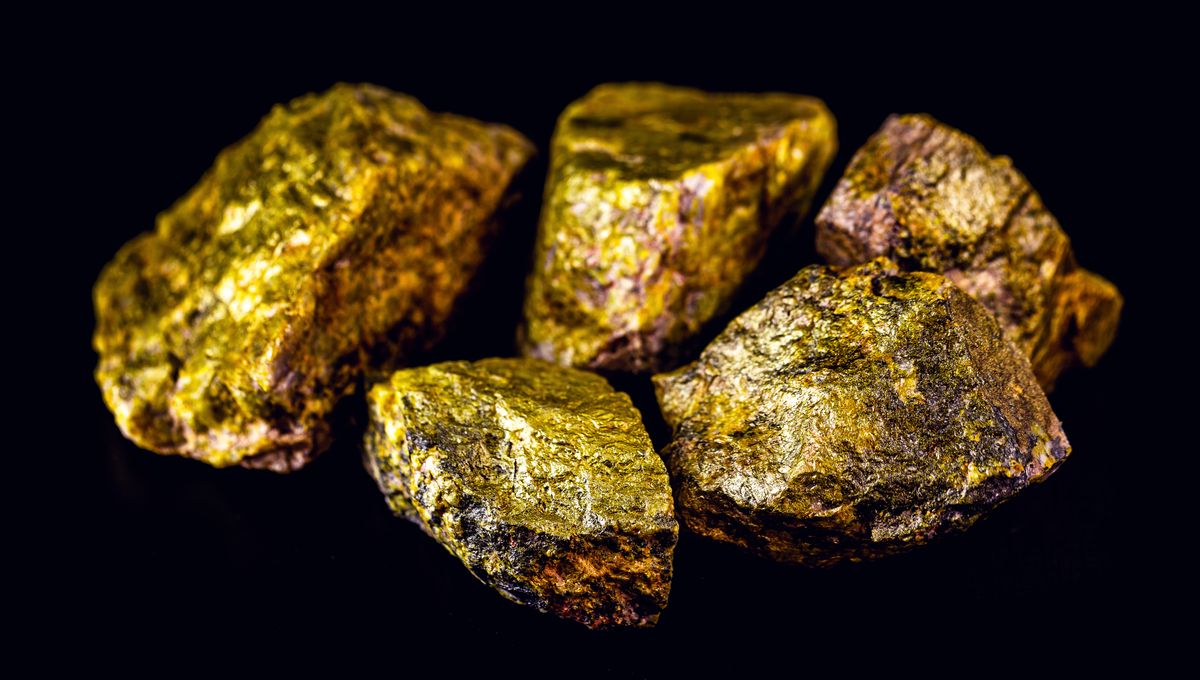
Nuclear power is a significant source of energy that has been around for several decades. It is considered a sustainable and low-carbon option, making it an essential tool in the fight against climate change. The secret to nuclear power lies in uranium, a naturally occurring element used to fuel nuclear power plants – but it is also the material used in many nuclear weapons. But how does a common ore go from being in the ground to creating vast amounts of energy?
What makes uranium so powerful?
Uranium holds both a fascinating history and immense significance in various fields. Discovered in 1789 by German chemist Martin Klaproth, uranium was named after the planet Uranus, which had only been discovered a few years previously.
This dense, silvery-white metal is known for its radioactive properties and abundant presence in the Earth’s crust. It is thought to have been formed in supernovae around 6.6 billion years ago and its slow radioactive decay is the main source of heat within the Earth, causing convection and even continental drift.
Like other elements, uranium occurs in several slightly different forms called isotopes, identified by the number of neutrons they have in their nucleus. Natural uranium ore is made up of two such isotopes: uranium-238 (U-238) and uranium-235 (U-235). It is the latter isotope, U-235, that is most important for nuclear power – but it only accounts for about 0.7 percent of natural uranium, whereas U-238 makes up about 99.3 percent.
The reason why U-235 is so important is that it is a fissile material, which means it can sustain a nuclear chain reaction. This is achieved by “splitting the atom”, a process referred to as “fission”, where a nucleus is bombarded by neutrons which cause it to break into two or more smaller nuclei. The energy released by this split is massive and comes in the form of heat. When U-235 undergoes fission, the split nucleus releases more neutrons, resulting in more and more fission reactions (the chain reaction) which produces even more energy.
It is this energy that sustains nuclear reactors, where the heat is used to make steam to drive turbines and generators, therefore creating electricity. It is, however, the same reaction that makes nuclear weapons explode. But while the principles between energy production and explosions are the same, the outcomes are very different.
In a nuclear reactor, uranium fuel rods are assembled in the core along with other rods called “nuclear poison” that absorb neutrons to limit fission reactions in a controlled way. These control rods can be inserted and withdrawn to set the reactor to the desired power level. Because of the way that fuel is prepared, if there is a critical event in the reactor, the core may overheat and melt but it cannot explode.
How does uranium make nuclear power?
Uranium has to go through a series of industrial processes before it can be loaded as fuel. Then, once it has been depleted, further steps are taken to either dispose of it or recycle the fuel. All these stages are collectively known as the nuclear fuel cycle.
The nuclear fuel cycle begins with uranium mining and milling, where uranium ore is extracted from the Earth’s crust and processed to obtain uranium concentrate, also known as yellowcake. This yellowcake is then converted into a form suitable for enrichment.
As mentioned above, the amount of U-235 in uranium ore is extremely low, so enrichment is used to increase concentrations of this vital isotope. This is achieved through various techniques, but often through the use of centrifuges that separate U-235 from U-238 by their difference in mass.
Once enough U-235 is accumulated, the enriched material undergoes fuel fabrication, where it is shaped into pellets and enclosed in metal to become fuel rods. These rods are then assembled into fuel assemblies for use in a reactor. This accounts for the front end of the nuclear fuel cycle.
After the fuel has been depleted and no longer sustains nuclear chain reactions, it needs to be managed in specific ways. The spent fuel assemblies are carefully removed from the core and put into storage. Eventually, the spent fuel will undergo reprocessing, where any usable materials are extracted for further use. The aim of this step is to recover valuable materials such as any remaining U-235, but also newly created plutonium, which can be reused as fuel in a reactor.
Reprocessing typically involves several steps, including dissolution, separation, purification, and fabrication of the recovered materials into new fuel assemblies. This process allows for the recycling and more efficient use of nuclear fuel, reducing waste and maximizing the energy potential of nuclear resources. However, reprocessing also presents challenges in terms of cost, proliferation risks, and waste management, which require careful consideration and stringent regulatory measures.
Because nuclear fuel can be used for nuclear weapons, only nations that are part of the Nuclear Non-Proliferation Treaty (NPT) are allowed to import uranium or plutonium. The treat helps safeguard the peaceful use of nuclear fuels and technologies and prevents the spread of weapons of mass destruction.
All “explainer” articles are confirmed by fact checkers to be correct at time of publishing. Text, images, and links may be edited, removed, or added to at a later date to keep information current.
Source Link: How Does Uranium Power Nuclear Reactors And Bombs?